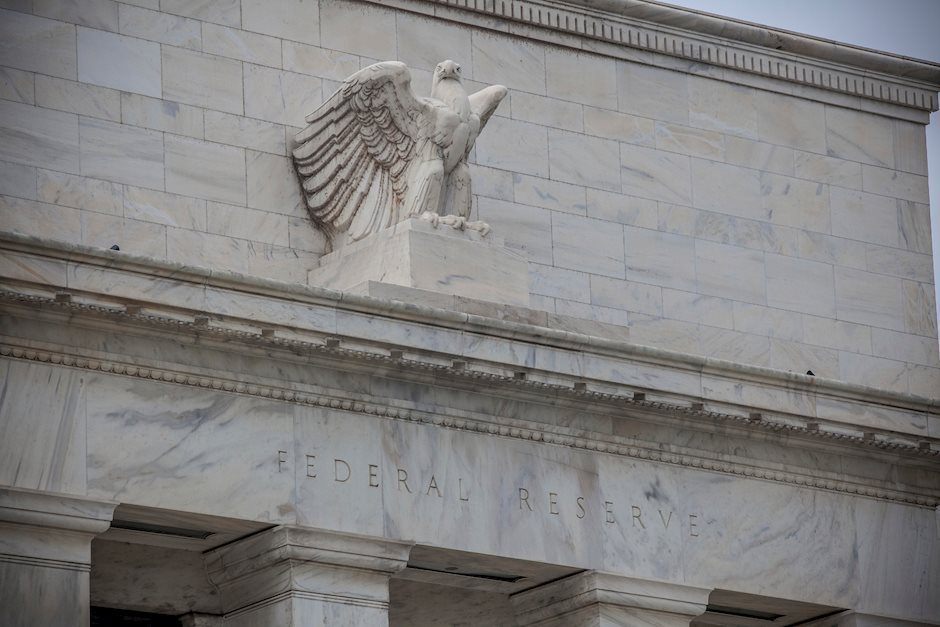The Fed’s “Not QE” Is Morphing into “QE4ever”

Another week, another new and expanded repo market intervention by the Federal Reserve. On Thursday, the Federal Reserve Bank of New York intervened twice with fresh liquidity injections. Fed officials raised their offerings for overnight repos up from $75 billion to a staggering $120 billion.
This comes on top of the $60 billion per month in Treasury bill purchases that will extend well into next year and possibly beyond. Over the past month alone, the Fed's balance sheet has soared by $200 billion.
You might think numbers like these should be quite alarming to investors and to anyone who holds U.S. dollars. But the strange thing about these Fed interventions is that hardly anyone seems alarmed. There’s no sense of rising risk being priced into the stock market. And the mainstream media is barely even mentioning these massive transfers of paper wealth.
Perhaps after multiple rounds of Quantitative Easing over the past decade, this latest spate of money printing is just part of the new normal. But we remain concerned that something very abnormal could be unfolding.
At the very least, there is a persistent liquidity shortage in overnight lending markets. And Fed officials obviously feared that it could cause the banking system to freeze up and money market funds to fail.
We don’t yet have all the answers as to what’s really going on in the bowels of these institutional markets, but we will continue to question the line the Fed is putting out. When these repo market interventions were first announced, our research team here at Money Metals, as well as our recent guest experts on this podcast, immediately suspected a new Quantitative Easing program was beginning.
Now, despite the Fed chairman Jerome Powell’s repeated denials, it’s pretty apparent we were right.
It is indeed QE, and we can only guess as to how much bigger it will get in the weeks to come. In fact, it’s looking more and more like “QE4ever.” Fed money printing certainly does carry implications for higher rates of price inflation down the road in the real economy.
The inflationary effects of previous QEs were largely absorbed by capital markets and stunted by relative weakness in the economy. This time around the Fed’s balance sheet surge is starting with the stock market at extremely elevated levels and many conventional economic indicators coming in strong
We wouldn’t be surprised if precious metals markets soon begin to reflect rising inflation risk.
This week gold and silver markets showed signs of moving toward an upside breakout. On Thursday, gold prices rallied above the $1,500 level while silver rallied up to its 50-day moving average.
Looking ahead to next week, metals investors will await the Fed’s decision on interest rates at its policy meeting. Fed policymakers appear likely to roll out another rate cut. It will come on top of all their other recent liquidity injections.
The risk for gold and silver markets is that Wall Street celebrates by pushing the stock market to a record high. If that happens, it could temporarily quell buying interest in the metals. But it won’t necessarily trigger any kind of big sell-off. A rising sea of liquidity does ultimately tend to lift all boats.
Precious metals markets have performed well overall this year on the heels of major multi-year breakouts. The consolidation phase over the past few weeks in no way undermines those breakouts or their longer-term bullish implications.
Looking ahead to next year, we can expect a very polarized and at times very nasty political campaign to begin moving markets once it’s clear who the Democrat nominee will be. Right now the momentum within the radicalized Democrat voter base is behind Elizabeth Warren.
Given Warren’s plans to jack up taxes and break up large American companies, some on Wall Street fear a Warren victory would crash the stock market by 20% or more.
One of Warren’s signature campaign promises is to impose a “wealth tax.” It would introduce a dangerous new concept into the tax code – namely that the government gets to tax not just capital gains on investments, but also the market value of investments and other household assets taken together.
A wealth tax would force you to account for the value of all your assets – from your financial accounts to your home, your car, your personal possessions, and your gold coins.
Under current law, gold and silver coins generate no tax liabilities or reporting requirements until they are sold. Under a wealth tax, gold coins and other tangible assets in your possession could get an annual scalping by the government.
Regardless of whether such a proposal ever gets enshrined into law, and regardless of who wins next year’s election, the government will be looking for new ways to raise revenues as budget deficits expand. One way to hedge against a Warren wealth tax or a Biden capital gains tax hike is by moving assets into a tax-sheltered IRA.
The government can’t tax IRA assets, including IRA-eligible physical precious metals products, until you take distributions. And with a Roth IRA, you may be able to avoid taxes completely – even as tax risks and inflation risks rise.
To receive free commentary and analysis on the gold and silver markets, click here to be added to the Money Metals news service.
Author

Mike Gleason
Money Metals Exchange
Mike Gleason is a Director with Money Metals Exchange, a national precious metals dealer with over 500,000 customers.

















